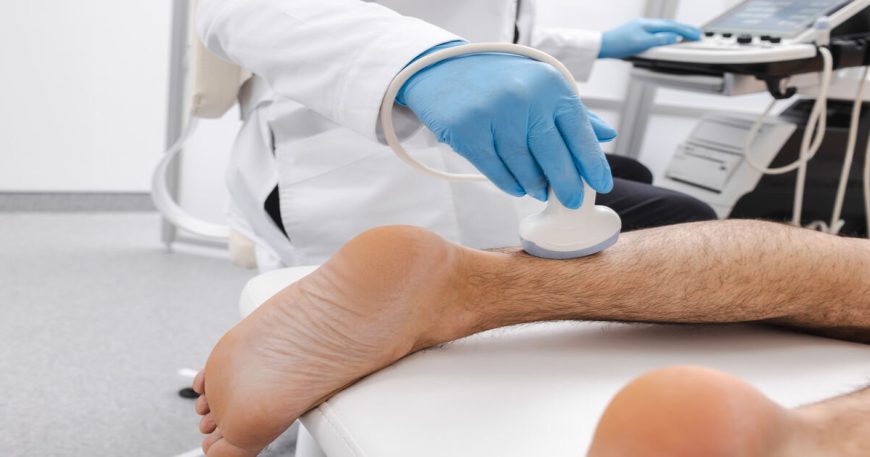
What Groundbreaking Treatments Are Emerging in Podiatric Research?
The art of medicine concerned with the diagnosis, treatment and prevention of ankle conditions and foot disorders is known as podiatry which has recorded a lot of improvement over the past few years. Due to our increased awareness of the importance of foot health and the advancement of technology, new methods of treatment are being developed to cover a broad spectrum of disorders. This blog examines the newest studies, practice, and technologies that are transforming the treatment in the field of podiatry and bring new hope to better outcomes and quality of life of patients.
The Need for Innovative Treatments
Foot and ankle diseases may have a serious positive effect on the mobility, quality of life and general health of a person. Plantar fasciitis, diabetic foot ulcers, and bunions are common conditions that may result in chronic pain and complications in case of their treatment. Although traditional treatments have proven to be effective to most patients, they do not necessarily offer the intended relief or there are limitations. This has necessitated the need to develop research and development in the field of podiatry in attempts to create more effective and minimally invasive solutions.
1. Regenerative Medicine
Stem Cell Therapy
Regenerative medicine and especially stem cell therapy is one of the most promising fields of study in the field of podiatry. Stem cells are the only cells that can be differentiated to produce different kinds of cells thus, they are indispensable in the repair and regeneration of damaged cells. Stem cell therapy is under investigation in podiatry in regards to treatment of plantar fasciitis, Achilles tendinopathy, and cartilage wounds.
Recent research has also demonstrated that the use of stem cells obtained using the patient’s adipose (fat) tissue, when injected into the affected areas, can be effective in healing and calming the inflammation. This technique does not only maximize the recovery but it reduces chances of rejection and complications since the stem cells are obtained out of the patient.
Platelet-Rich Plasma (PRP) Therapy
Platelet-Rich Plasma (PRP) therapy has become another new treatment that is popular in the field of podiatry. This procedure requires a minor portion of a patient to be drawn in the blood, processed to concentrate the platelets and then injected into the region of injury with the PRP. High levels of growth factors in PRP has the potential to heal, alleviate pain and enhance functionality in patients with long term tendon injuries and other musculoskeletal diseases.
Studies have indicated that PRP therapy has a promising future as a treatment in the occurrence of conditions like Achilles tendinitis and plantar fasciitis. Although additional research on the topic is necessary to allow researchers to create universal recommendations and long-term results, most podiatrists are already using PRP in their practice.
2. Advanced Surgical Techniques
Minimally Invasive Surgery
Technological changes in surgery have transformed the treatment of ailments that would have taken long and complicated treatment by the podiatrist. Minimally invasive surgery (MIS) involves the use of small incisions and special apparatus to make surgical corrections with fewer traumas to the tissues around. This will ensure a great deal of time saved in terms of recovery, postoperative pain, and scarring.
As an example, bunionectomies can be now done under MIS methods and as a result, the recovery time is reduced and one can resume normal life quickly. It has been proven that patients who have gone through minimally invasive surgery on the bunion have lower pain and a quicker recovery than the conventional open surgery.
Robotic-Assisted Surgery
Another new technology that is making in-roads in the field of podiatry is robotic-assisted surgery. Such systems make the surgeon more precise and in control of the procedures resulting in better outcomes. Robotic systems could help in activities like bone cutting and soft tissue manipulation where more accuracy and consistency could be attained.
Robotic-assisted surgery is yet to be fully adopted in the field of podiatry despite its tremendous promise in complex foot and ankle surgeries such as joint repair and correcting deformities. The current studies are likely to offer more opportunities to understand its efficacy and advantages.
3. Biomechanical Interventions
Custom Orthotics and Footwear
Biomechanics is vital to the health of the foot, and custom orthotics have been a featured item in the treatment of the foot. New technologies are improving on the designs and manufacture of these orthotics in order to increase patient outcomes. The possibility of having digitized scanning and 3D printing can make highly customized orthotics that can be designed to suit the needs of an individual of the foot shape, including biomechanical factors.
Recent research has shown that custom orthotics can be effective in relieving pain and enhancing the performance of patients with such disorders as plantar fasciitis, flat feet, and diabetic foot ulcers. These orthotics are able to offer long-term relief and avoid future complications by treating the causative biomechanical problems.
Smart Insoles
The appearance of smart technology has resulted in the creation of smart insoles with sensors that monitor the pressure of the feet, gait, and other factors on the fly. Such devices will be able to offer useful feedback to patients and healthcare providers and allow them to tailor the treatment plan and make timely interventions.
There is current research focused on the effectiveness of smart insoles in preventing injuries particularly among athletes and those who have chronic foot conditions. The evaluation of data obtained due to the usage of the devices will provide the podiatrist with the information concerning the foot mechanics of a patient and will help to modify the treatment plan.
4. Holistic and Preventive Approaches
Integrative Podiatry
Due to the changing nature of the podiatry field, there is the increased acknowledgement of the significance of holistic and integrative approaches to the health of the feet. It entails taking into account the health status of the patient, his or her lifestyle and environment in the formulation of treatment plans.
Integrative podiatry can use nutrition, exercise, and lifestyle changes with conventional therapies. As an example, patient education could empower patients to be involved in the management of the health of their feet by learning on how to wear their shoes correctly, the right exercises, and weight management.
Preventive Strategies
Preventive care plays a significant role in podiatry particularly in patients who are at risk of developing foot complications e.g. diabetes patients. Recent studies underline the need to perform regular foot checkups, educate patients and to develop early intervention methods to stop their development to more serious disorders.
New education and community outreach programs are the ones that are being designed to create awareness of foot health and its importance, especially to people that are at risk. Such defensive actions will minimise the rates of foot related complications and enhance general health outcomes.
Conclusion
The profession of podiatry is experiencing a revolution, and this is due to new treatments and new studies. Whether it is regenerative medicine and sophisticated surgery solutions or the biomechanical interventions and holistic approach, podiatrists are prepared more than ever to be able to focus on the needs of their patients in a multi-faceted way.
The future of podiatry is bright as new discoveries and technologies are still being made as research is conducted. Patients would be able to anticipate better, more effective, and less invasive treatment modalities that can improve foot health and quality of life. Being aware of these innovations and engaging in their attention, one can take great strides towards keeping the feet healthy and the general well-being on the required level.




